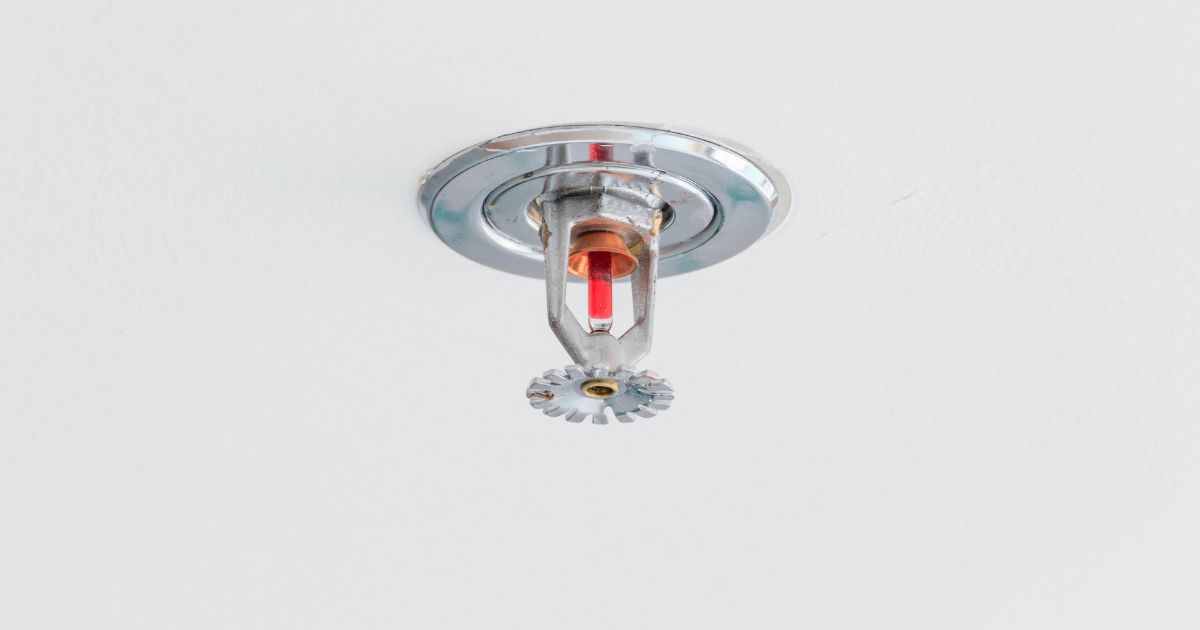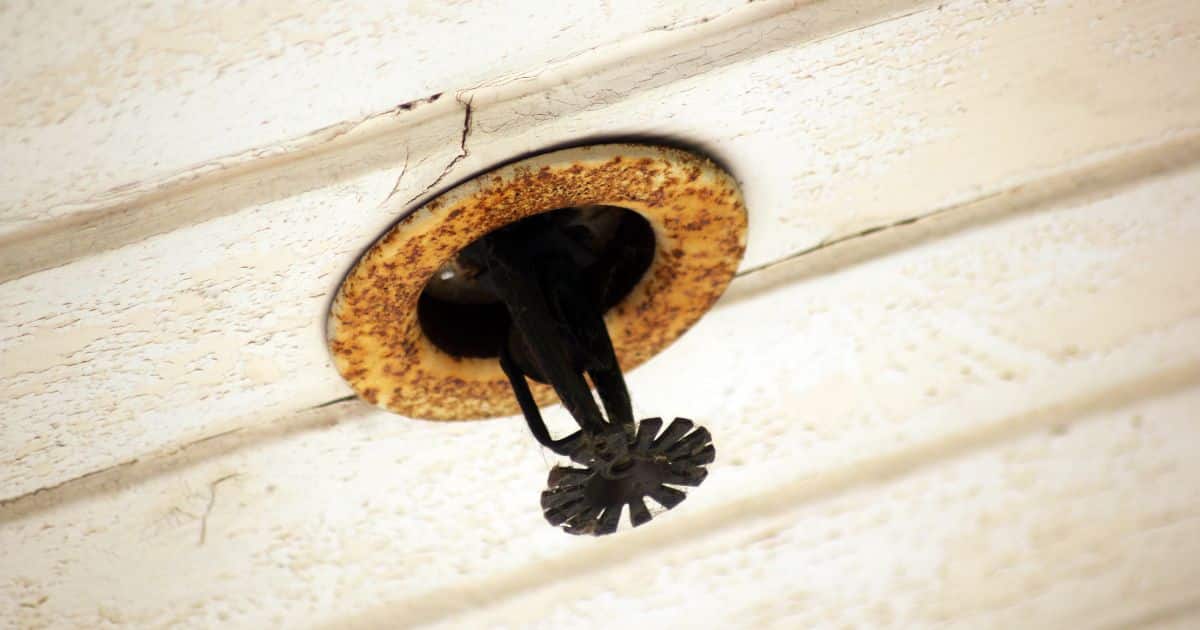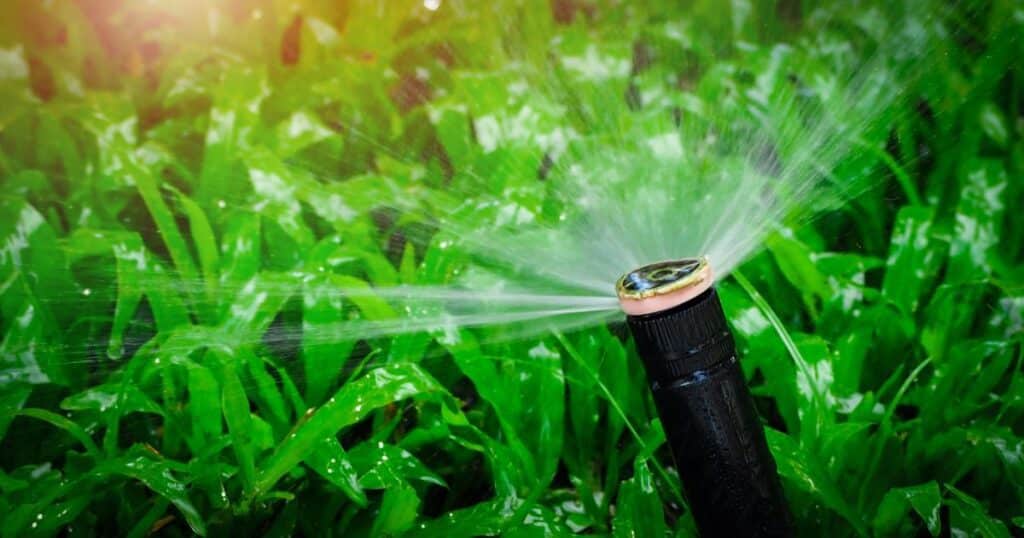
Are your fire sprinkler heads feeling a bit dusty and in need of some TLC? Don’t worry, we’ve got you covered! In this guide, we’ll reveal the secrets to keeping your fire sprinkler heads spick and span, ensuring they’re ready to spring into action when needed. So put on your cleaning gloves and get ready to dance with those sprinkler heads because we’ve got some fantastic tips and tricks coming your way!
To clean fire sprinkler heads, start by turning off the water supply to the system. Gently wipe the sprinkler heads using a soft cloth or brush to remove any dirt or debris. Avoid using harsh chemicals or excessive force that could damage the sprinkler heads.
Importance of Maintaining Fire Sprinkler System
The importance of properly maintaining a fire sprinkler system cannot be overstated. Neglecting maintenance can result in serious consequences, including property damage, personal injury, and even loss of life.
The most common cause of malfunctioning fire sprinkler systems is clogging due to buildup or debris on the heads. This can prevent water from being distributed evenly throughout the affected area, leading to insufficient coverage during a fire.
Additionally, corrosion and damage to the sprinkler heads can lead to leaks and malfunctions, which can cause significant water damage if not caught early. Regular cleaning and maintenance can help detect these issues before they become major problems.
It is important to note that regular cleaning should not be viewed as an optional expense but rather as an essential requirement for any building with a fire sprinkler system. Failure to adhere to proper cleaning procedures can result in legal liability for building owners if an incident occurs due to neglect.
Overview of the Cleaning Process
Maintaining the cleanliness of fire sprinkler heads is crucial for optimal performance, and knowing how to clean fire sprinkler heads can help ensure their effectiveness when needed the most. Begin by carefully turning off the water supply leading into the fire sprinklers, safeguarding the pipes from any cleaning solution. This essential step sets the stage for a thorough cleaning process, preserving the integrity and functionality of the entire system.
Next, all necessary tools should be gathered, such as ladders or extension poles, depending on how high up the heads are located. Inspecting each head thoroughly for signs of corrosion or physical damage must be done before starting any cleaning process; if the head is damaged, it may need to be replaced.
Next, debris and buildup should be removed from the sprinkler head using a soft-bristled brush or compressed air. Once all debris has been removed, a cleaning solution specific to the type of buildup on the head can be used to remove any remaining residue.
Rinsing with clean water is necessary. It is essential not to use abrasive material on the sprinkler head as this could damage or scratch it.
After this process has been completed, it’s important to dispose of any cleaning solution and debris responsibly. Maintaining a fire sprinkler system requires attention to detail and proper care.
Regular cleaning of sprinkler heads can help ensure they are functioning properly in case of an emergency and save lives in doing so. Properly maintained fire sprinklers lead to reduced property damage as well as fewer losses due to fires in general, making them an essential part of building safety systems.
Preparing for Cleaning
Shutting off the water supply to the sprinkler system
Before beginning the process of cleaning fire sprinkler heads, it is crucial to shut off the water supply to the system. This can typically be done by turning a valve located near the main water line. It is important to ensure that everyone in the building is aware that the water will be shut off temporarily, as this may impact daily activities and routines.
Gathering necessary tools and equipment
To properly clean fire sprinkler heads, there are several tools and pieces of equipment that are necessary. These may include a ladder or scaffolding to reach higher sprinklers, a bucket or basin to catch any debris or cleaning solution, soft-bristled brushes or cloths for gentle cleaning, a cleaning solution appropriate for the type of buildup on the heads, and gloves and eye protection for safety. It is important to gather all necessary tools before beginning the cleaning process in order to avoid interruptions or delays.
Ensuring safety measures are in place
Cleaning fire sprinkler heads can involve working at heights and handling potentially hazardous materials. Therefore, it is essential to ensure that proper safety measures are in place before beginning.
This may include wearing protective gear such as gloves and eye protection, using caution when climbing ladders or scaffolding, and ensuring electrical sources are not nearby when using liquids like solvents. It’s also important that individuals involved in cleaning have been trained on best practices when maintaining fire suppression systems.
Moreover, one should make sure not only about his own safety but also about others who might get affected by any mishap during this process i.e. proper barriers must be placed around the work area so others do not stumble upon scaffoldings/ladders while working. In addition, engaging qualified service personnel who specialize in maintaining fire suppression systems can greatly reduce risk while improving overall efficiency.
RELATED: How to Remove Fire Sprinkler Cover Plate: A Guide for Safety
Disabling automatic fire alarm systems
As the cleaning process may involve water spray or dust, it is important to disable any automatic fire alarm systems during the cleaning process. If not disabled, the alarms can be triggered, causing disruption and panic among occupants of the building. One should consult with local jurisdiction/facility management before disabling any safety system.
What to do if there is an emergency?
Despite taking appropriate preventive measures, emergencies can still occur. In case of accidents or incidents, such as a fire breaking out during cleaning, it is important to know where emergency exits are located and have a clear evacuation plan in place. This can help ensure everyone’s safety during unforeseen circumstances.
Overall, proper preparation before beginning the fire sprinkler head cleaning process is essential for both safety and efficiency reasons. Following these steps will help minimize risks associated with maintenance while greatly improving overall system operation.

Cleaning Process
Inspecting sprinkler heads for damage or corrosion
The first step in cleaning fire sprinkler heads is to inspect them thoroughly for any signs of damage or corrosion. This is an important step as damaged or corroded sprinkler heads may not work properly in case of a fire, which could lead to devastating consequences. To start the inspection, turn off the water supply to the sprinkler system and remove the head from its fitting using a wrench.
Examine the head closely for any cracks, dents, or other signs of physical damage. If you notice any visible damage, replace the head with a new one immediately.
If there are no signs of physical damage, use a magnifying glass to check for corrosion on the metal parts. If you find any corrosion, remove it with a wire brush before proceeding with the cleaning process.
Removing debris and buildup from the head
Over time, dust, dirt and other debris can accumulate on fire sprinkler heads, which can obstruct their function during an emergency situation. To remove this buildup effectively, it’s important to use specialized cleaning tools such as compressed air canisters or soft bristle brushes.
Begin by gently blowing compressed air over each part of the head to dislodge loose debris such as dust and cobwebs. Next, use a soft-bristled brush dipped in warm water and soap solution to scrub away stubborn debris that has accumulated on the head’s surfaces.
Be careful not to use too much force while scrubbing, as you risk damaging delicate parts of your fire sprinkler system. Rinse each cleaned area with clean water and allow it to dry.
Using a cleaning solution to remove any remaining residue
In some cases where stubborn buildup remains after brushing or blowing air onto your fire sprinkler head’s surfaces, it may be necessary to supplement your cleaning routine with a specialized cleaning solution. Be sure to choose a cleaning solution that is specifically recommended for use on fire sprinkler heads, as some general-purpose cleaners may be too harsh and cause more damage than good. Apply the cleaning solution onto the affected areas of your sprinkler head using a cloth or brush.
Allow the solution to soak in for a few minutes, then scrub away any remaining residue with a soft-bristled brush or cloth. Rinse each cleaned area thoroughly with clean water and allow it to dry completely before reassembling the system.
Rinsing the head with clean water
After completing all of the above steps, it’s important to rinse your fire sprinkler head thoroughly with clean water. This helps to ensure that all traces of debris and cleaning agents are removed from its surface while also ensuring that it is functioning properly. To rinse, turn on your sprinkler system’s water supply and direct it toward each individual head you have cleaned.
Allow the water to flow for several minutes until you are confident that all debris has been washed away. Turn off your system’s water supply and wipe each cleaned area dry using a soft towel or cloth before reattaching your heads back into their fittings.
Different Types of Cleaning Solutions for Different Types of Buildup
When it comes to cleaning fire sprinkler heads, it’s important to use the right kind of cleaning solutions for the specific type of buildup on each head. There are several types of cleaning solutions available, including acidic and alkaline-based cleaners, as well as enzymatic cleaners.
It’s important to choose the appropriate cleaner based on the type of buildup you’re trying to remove from the sprinkler head. For example, if you’re dealing with mineral buildup caused by hard water, an acidic cleaner may be best.
On the other hand, if you’re trying to remove organic material such as algae or bacteria, an enzymatic cleaner may be more effective. It’s also important to consider any potential damage that a particular cleaner may cause to the sprinkler head material.
Before applying any cleaning solution, be sure to read and follow all instructions and safety precautions provided by the manufacturer. Always wear appropriate personal protective equipment (PPE) when handling any cleaning solution.
Alkaline-Based Cleaners
Alkaline-based cleaners are often used for removing grease and oil-based buildup from fire sprinkler heads. These cleaners work by breaking down and emulsifying oils and greases so they can be easily rinsed away with water.
Alkaline-based cleaners are typically diluted in water before use. Be cautious when using alkaline-based cleaners on brass or copper-based materials, as these metals can become damaged due to prolonged exposure to alkaline solutions.
Acidic-Based Cleaners
Acidic-based cleaners are ideal for removing mineral deposits caused by hard water build-up from fire sprinkler heads made out of materials like brass or copper. When using acidic-based cleaners, make sure that they are properly diluted according to their instructions; otherwise, they may cause irreparable damage.
Enzymatic Cleaners
Enzymatic cleaners are often used for removing organic material from fire sprinkler heads. These cleaners work by breaking down and digesting organic material such as algae and bacteria. Enzymatic cleaners are usually diluted in water before use, and they work best when left on the sprinkler head for a period of time (as instructed) before being rinsed away with clean water.
How to Properly Dispose of Cleaning Solution and Debris
After cleaning the fire sprinkler heads, it’s important to properly dispose of any cleaning solution or debris that was removed. Improper disposal can lead to negative environmental impacts, as well as potential safety hazards.
First, allow any used cleaning solution to cool and settle so that any solid debris settles at the bottom of the container. Then carefully pour off the liquid into a separate waste container that is labeled appropriately for hazardous waste.
Solid debris should be disposed of according to local regulations for hazardous waste disposal. Be sure to also properly clean any tools or equipment used during the cleaning process before storing them away.
This will ensure that they are ready for future use and prevent contamination or cross-contamination between different fire-suppression systems. By following these guidelines, you can help ensure safe and effective maintenance of your fire sprinkler system while also minimizing negative environmental impacts.
RELATED: How To Protect Sprinkler Heads: Safeguard Your Building
The Importance of Not Using Abrasive Materials on the Sprinkler Head
Fire sprinkler heads are designed to detect and respond to heat, ultimately activating the sprinkler system and extinguishing a fire. However, if the head becomes damaged or compromised in any way during cleaning, it may not function properly when it is needed.
One common mistake people make when cleaning fire sprinkler heads is using abrasive materials such as steel wool or sandpaper to remove buildup. This can cause irreversible damage to the head and compromise its ability to perform effectively during a fire.
Instead of using abrasive materials, it is recommended that a non-abrasive cleaning solution and soft-bristle brush be used for cleaning. The solution should be gentle enough to not damage the head but effective enough to remove any buildup or residue that may have accumulated over time.
It is important to note that some types of sprinkler heads may have specific cleaning instructions provided by the manufacturer. If you are unsure about what type of cleaning solution or tools are safe for your particular fire sprinkler system, it is always best to consult with a professional who has experience in maintaining these systems.
What Are The Potential Consequences of Neglecting To Clean Fire Sprinkler Heads?
Neglecting routine maintenance on your fire sprinkler system can result in several potential consequences: 1) Reduced Effectiveness: Over time, buildup in the pipes and on the fire sprinkler heads can hinder their ability to function as intended.
This can reduce their effectiveness in detecting and responding to fires. 2) False Alarms: If debris accumulates inside a sprinkler head, it could activate without an actual fire present – known as a false alarm – which can be frustrating for residents or employees within a building.
3) Expensive Repairs: Neglecting routine maintenance on your fire system could lead to costly repairs down the line if pipes burst due to clogged debris or if the sprinkler head becomes damaged from neglect. 4) Code Violations: Neglecting routine maintenance can also result in code violations, which can result in hefty fines and penalties.
Frequently Asked Questions
Can I clean fire sprinkler heads?
No, it is generally not recommended for individuals to clean fire sprinkler heads themselves as it requires specialized knowledge and equipment. It is best to leave the cleaning and maintenance of fire sprinkler heads to qualified professionals.
How do you clean sprinkler heads?
Sprinkler heads can be cleaned by gently wiping the surface with a soft cloth or sponge to remove any debris or dirt that may be obstructing the water flow. Avoid using harsh chemicals or abrasive materials that could damage the sprinkler head.
How do you clean a sprinkler head filter?
To clean a sprinkler head filter, carefully remove the sprinkler head from the riser or pop-up assembly. Rinse the filter with water to remove any accumulated debris or sediment, and gently brush or tap it to dislodge stubborn particles. Then, reassemble the sprinkler head.
What is the best way to clean sprinkler systems?
The best way to clean sprinkler systems is to perform regular maintenance, including inspecting and cleaning the sprinkler heads, checking for clogs or blockages in the irrigation lines, and flushing out any debris or sediment that may have accumulated in the system.
Do sprinkler heads need to be cleaned?
Yes, sprinkler heads should be regularly cleaned to ensure optimal performance and prevent clogging or blockages that can affect water distribution. Regular cleaning helps maintain proper spray patterns and prevents uneven watering.
Can fire sprinkler heads be reused?
It depends on the specific circumstances. In some cases, fire sprinkler heads can be reused if they have not been damaged or exposed to corrosive substances. However, it is essential to consult with a qualified fire protection professional to determine if the sprinkler heads are still suitable for reuse or if they need to be replaced for safety reasons.
Conclusion
Reiterating the importance of maintaining fire sprinkler systems through regular cleaning.
Regular maintenance and cleaning of fire sprinkler systems are essential to ensure they function effectively in the event of a fire. Neglecting to clean these systems can lead to costly damages and even loss of life.
Therefore, it is crucial to schedule routine checks and keep your sprinkler system in good condition. Cleaning your fire sprinklers is not a one-time job; it requires regular attention.
The frequency at which you should clean the sprinkler heads depends on various factors such as climate, age of the system, and surrounding environment. It is advisable to hire professionals for this task as they have the expertise and safety measures in place.






